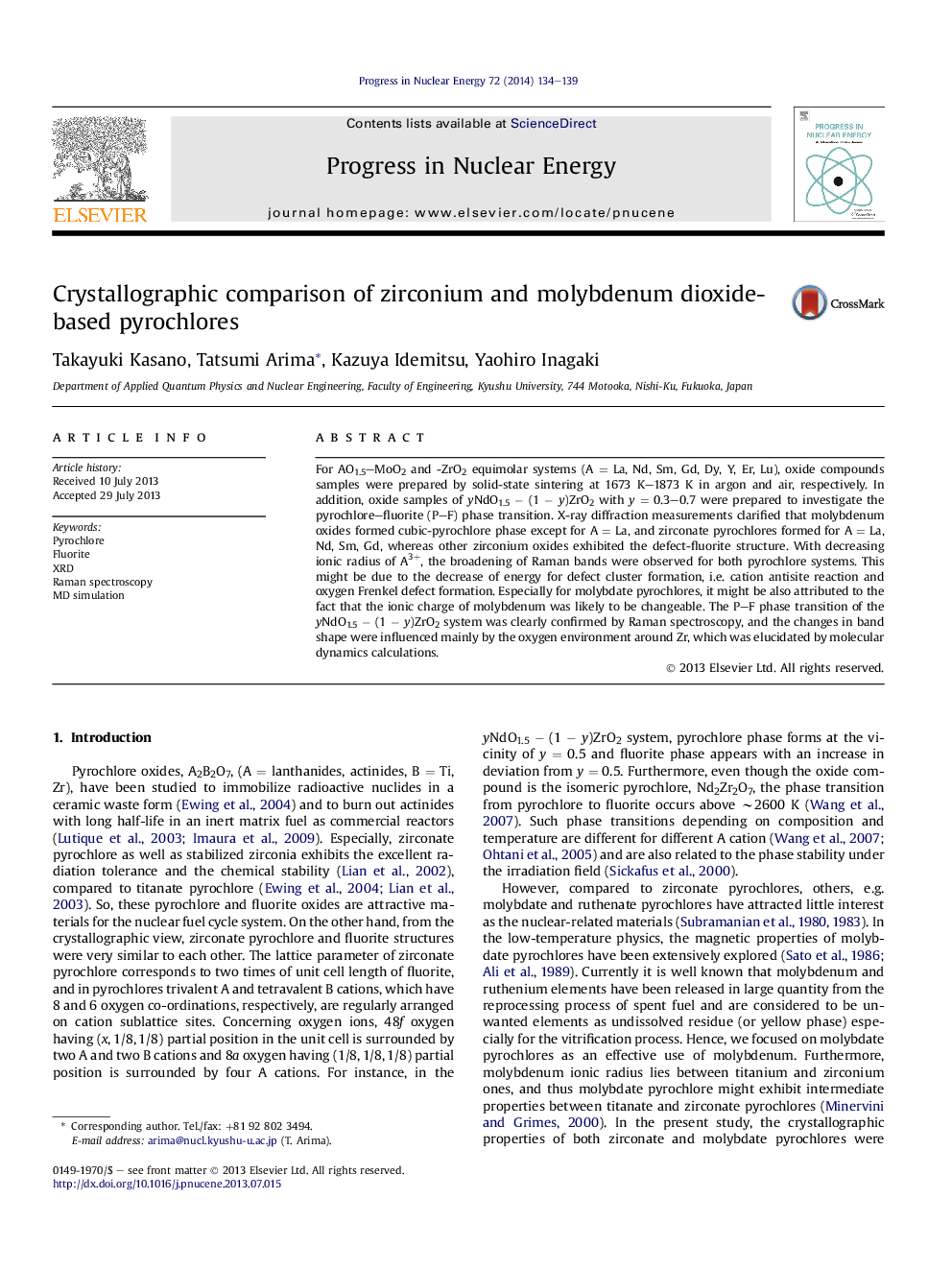| Article ID | Journal | Published Year | Pages | File Type |
|---|---|---|---|---|
| 1740697 | Progress in Nuclear Energy | 2014 | 6 Pages |
•The phase stabilities of molybdate and zirconate pyrochlores were discussed.•The phase transition between pyrochlore and fluorite zirconia was discussed.•Experimental crystallographic properties were analyzed by XRD and Raman spectroscopy.•Local crystallographic properties of Zr oxides were evaluated by MD calculations.
For AO1.5–MoO2 and -ZrO2 equimolar systems (A = La, Nd, Sm, Gd, Dy, Y, Er, Lu), oxide compounds samples were prepared by solid-state sintering at 1673 K–1873 K in argon and air, respectively. In addition, oxide samples of yNdO1.5 − (1 − y)ZrO2 with y = 0.3–0.7 were prepared to investigate the pyrochlore–fluorite (P–F) phase transition. X-ray diffraction measurements clarified that molybdenum oxides formed cubic-pyrochlore phase except for A = La, and zirconate pyrochlores formed for A = La, Nd, Sm, Gd, whereas other zirconium oxides exhibited the defect-fluorite structure. With decreasing ionic radius of A3+, the broadening of Raman bands were observed for both pyrochlore systems. This might be due to the decrease of energy for defect cluster formation, i.e. cation antisite reaction and oxygen Frenkel defect formation. Especially for molybdate pyrochlores, it might be also attributed to the fact that the ionic charge of molybdenum was likely to be changeable. The P–F phase transition of the yNdO1.5 − (1 − y)ZrO2 system was clearly confirmed by Raman spectroscopy, and the changes in band shape were influenced mainly by the oxygen environment around Zr, which was elucidated by molecular dynamics calculations.
